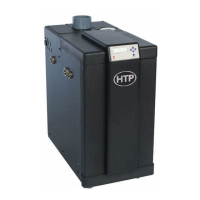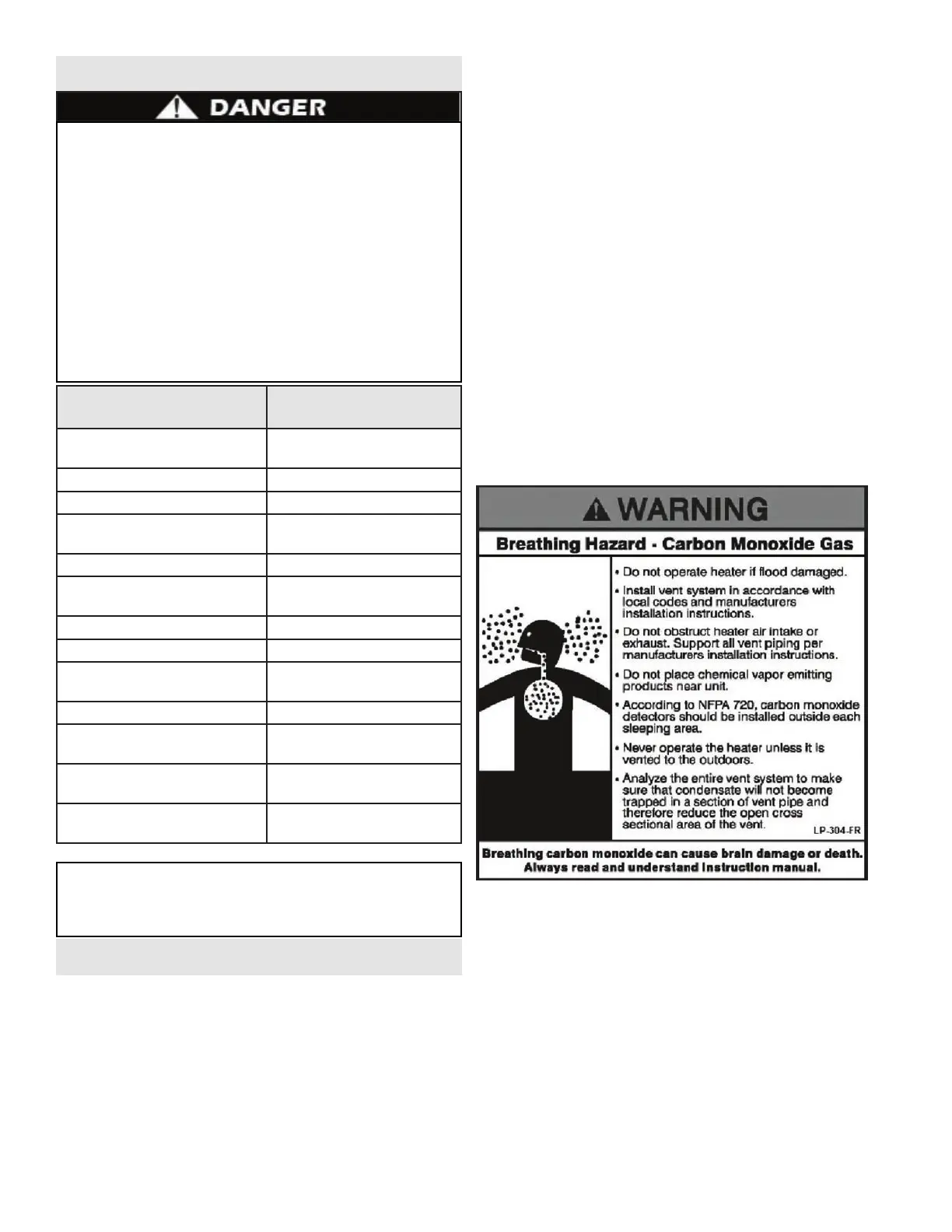LP-389 Rev. 6.3.15
4
Products to Avoid
Areas Likely to Have
Contaminants
Spray cans containing
uorocarbons
Dry cleaning / laundry areas and
establishments
Permanent wave solutions Swimming pools
Chlorinated waxes / cleaners Metal fabrication plants
Chlorine-based swimming pool
chemicals
Beauty shops
Calcium chloride used for thawing Refrigeration repair shops
Sodium chloride used for water
softening
Photo processing plants
Refrigerant leaks Auto body shops
Paint or varnish removers Plastic manufacturing plants
Hydrochloric or Muriatic acid
Furniture renishing areas and
establishments
Cements and glues New building construction
Antistatic fabric softeners used in
clothes dryers
Remodeling areas
Chlorine-type bleaches, laundry
detergents, and cleaning solvents
Garages and workshops
Adhesives used to fasten building
products
Table 1 - Products and Areas Likely to Have Contaminants
NOTE: DAMAGE TO THE HEATER CAUSED BY EXPOSURE
TO CORROSIVE VAPORS IS NOT COVERED BY WARRANTY.
(Refer to the limited warranty for complete terms and
conditions.)
Part 3 - Maintenance Schedule
A. Service Technician
Thefollowingmaintenanceshouldbeperformedbyaqualied
service technician annually:
General
• Attend to any reported problems.
• Inspect the interior of the appliance; clean and vacuum
if necessary.
• Cleanthecondensatetrapandllwithfreshwater.
• If applicable, check the condensate neutralizer and
ensure it is full of condensate neutralizing marble chips.
• Checkforleaks:Water,gas,ue,andcondensate.
• Verify exhaust vent and intake piping are in good
condition and sealed tight.
• Check exhaust vent and intake pipe bracing. Ensure
bracing is undamaged and in good condition.
• Check appliance water pressure, piping, and expansion
tank.
• Check control settings.
• Check ignition electrode. Sand o any white oxide.
Clean and reposition.
• Check ignition and ground wiring.
• Check all control wiring and connections.
• Checkburneramepattern(stableanduniform).
Additional Items if Combustion of Performance is Poor
• Cleanheatexchangerandueways.
• Remove burner assembly and clean burner head using
compressed air only.
The service technician should review service with the owner
after the maintenance items are completed.
B. Owner Maintenance
Periodically
• Check area around the appliance.
• Check and remove any blockage from the outdoor
exhaust vent and intake pipe terminations. DO NOT
perform this maintenance if exhaust vent and intake
pipeterminationsareindiculttoreachlocations.
• Check the temperature / pressure gauge.
Monthly
• Check exhaust vent and intake piping.
• Check exhaust vent and intake pipe bracing. Ensure
bracing is undamaged and in good condition.
• Check the pressure relief valve.
Part 2 - Combustion Air Contamination Prevention
Do not operate the appliance if its combustion air intake is
located in or near one of the areas or in the vicinity of products
listed in Table 1. These areas will always contain hazardous
contaminates that can form strong acids while passing
through the burner and vent system. These acids will corrode
the appliance’s heat exchanger, burner components and vent
system, resulting in ue gas spillage and/or water leakage,
possible substantial property damage, severe personal injury,
or death. If the appliance combustion air intake is located in
any area likely to cause or contain contamination, or if products
which would contaminate the air cannot be removed, the intake
must be re-piped and terminated to another location.
DO NOT re-pipeventilationsystemonyourown.Callaqualied
service provider for assistance.

